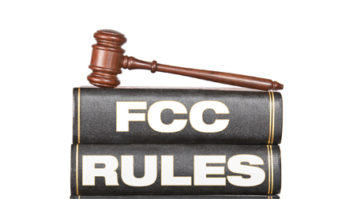Among the studies submitted to the FCC andreleased this weekas part of its media ownership review process is one that looks at the relationship between radio station ownership and minority-targeted programming, always a hot-button political topic in radio circles.
Its findings seem unlikely to create major change in the political calculus or in industry opinion about the key issues. But decide for yourself. Here are its conclusions. The study was by Joel Waldfogel of the Carlson School and Department of Economics at the University of Minnesota:
1) As in the 1990s, blacks and nonblacks — and Hispanics and non-Hispanics — have “starkly different preferences” in radio programming, Waldfogel found. “Urban stations collectively attract half of black listening but only 4% of nonblack listening. Spanish stations attract nearly half of Hispanic listening and negligible amounts of non-Hispanic listening.”
2) Some minority-targeted formats like urban, jazz and Spanish are less commonly available than others.
3) “As in the 1990s, most minority-owned stations target minority listeners, but — also as in the 1990s — most minority-targeted stations are not minority-owned.”
4) Waldfogel found that stations in large groups tend to attract more listeners — overall, as well as among blacks and Hispanics — than do stations in smaller ownership groups.
5) The availability of minority-targeted stations seems to attract more minorities to radio listening, he wrote, though with qualifications.
6) The presence of minority-owned stations in a market appears to raise the amount of minority-targeted programming.
7) In the period Waldfogel studied (2005–2009), he found “mixed evidence” on the statistical relationship between ownership concentration and content variety. He said he was “unable to draw strong conclusions” using data from this time frame, but he cautioned that this is “not the same as a robust finding that there is no effect.” He said existing studies found that elevated ownership concentration raised the number of varieties available, “especially conditional” on the number of stations.
The report makes for dry reading but it provides insight into the challenges (and processes) in trying to quantify things that don’t easily lend themselves to being quantified.
The charts and data toward the end are intriguing, looking at factors such as “Minority and Group Radio Station Ownership,” “Black and White Listening Patterns” by format and “Metro Area Station Availability” (in which we learn for instance that in 2009, 95% of 300 Arbitron metros had at least one country station, 48% had an urban station and 6% had an easy listening/beautiful music outlet).
The studies can be found on its website under “Ownership Studies.”
These reports by scholars outside the agency are meant to help the commission in its periodic media ownership review (MB Docket No. 09-182). Overall, the studies look at issues that affect diversity, competition and localism. Comments are due July 12.












